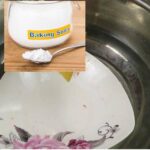According to Laura Goodman, a senior scientist at Procter & Gamble, it is possible to salvage these greasy stains. Most fats and oils are solid or semi-solid at room temperature, which means that warm or hot water is required for their removal. However, it also depends on the fabric.
Goodman explains that synthetic fiber clothing, such as polyester, is particularly challenging to deal with because the oil tends to penetrate deeper into the fabric. And, as synthetic fiber clothing becomes increasingly popular, it also means that you’re more likely to grapple with these stains on a regular basis.
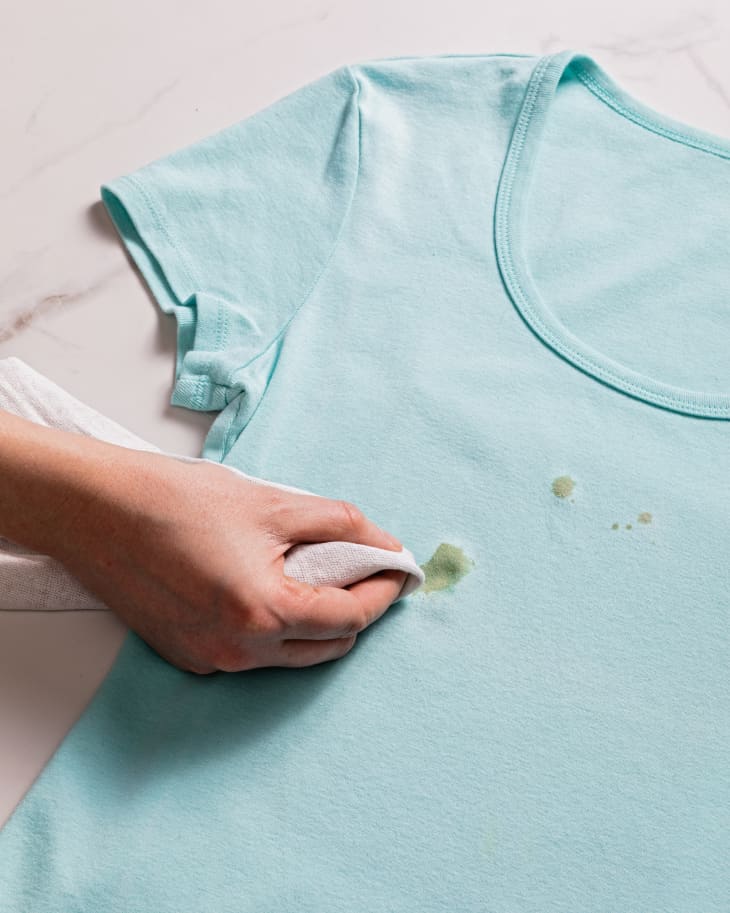
Synthetic fiber clothing is particularly tricky to deal with.
Furthermore, to effectively remove oil stains from clothing, it’s best to act as quickly as possible, ideally as soon as the stain occurs. If the stain has already dried or set in, it becomes significantly more difficult to remove.
Here’s everything you need to know to remove oil and grease stains from your clothes:
1. Using Baking Soda to Remove Oil Stains
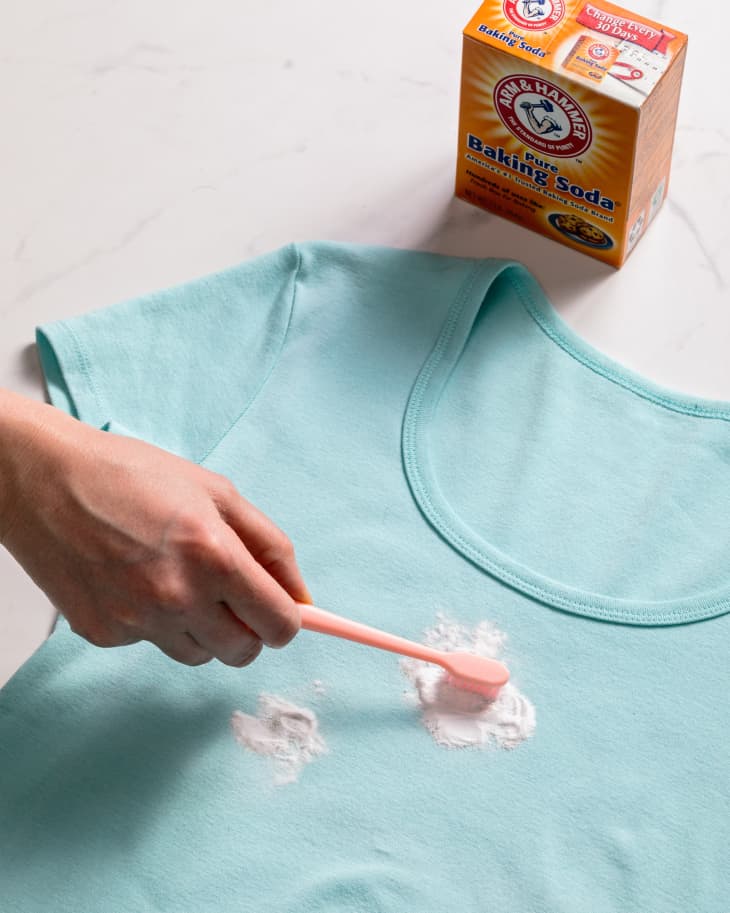
Baking soda is often used as a first resort before treating any type of stain.
Laundry expert Patric Richardson, who also owns the Mona Williams store in Minneapolis, explains that baking soda removes oil from fabric by dissolving and drawing out the stain.
If you can’t wash an item, such as a heavy coat or a piece of furniture, Richardson recommends using baking soda as a first resort before treating any type of stain.
Here’s how to do it:
– Remove excess oil with a paper towel or cloth.
– Sprinkle baking soda on the stained area and let it sit for 24 hours.
– After a day has passed, vacuum or brush off the baking soda.
– Spray the affected area with a vinegar and water solution.
– Scrub with soap and a brush, then rinse.
– Repeat the process if the stain remains.
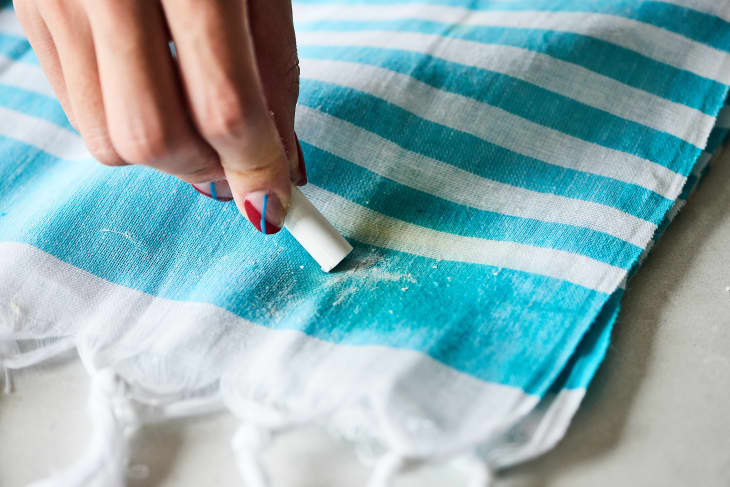
2. Using Talcum Powder to Remove Oil Stains
Regarding this method, Richardson says that talcum powder can absorb oil from your clothes just like baking soda. However, he also advises against using powder for large or old stains.
Instead, try this trick for small splatters of oil, such as when you’re cooking and a drop of oil lands on your shirt.
Here are the steps to follow:
– Use a clean paper towel to remove excess food and oil from the clothing.
– Cover the entire stained area with talcum powder and let it sit for a few minutes to absorb the oil completely.
– Wash the soiled item as soon as possible after the stain occurs.
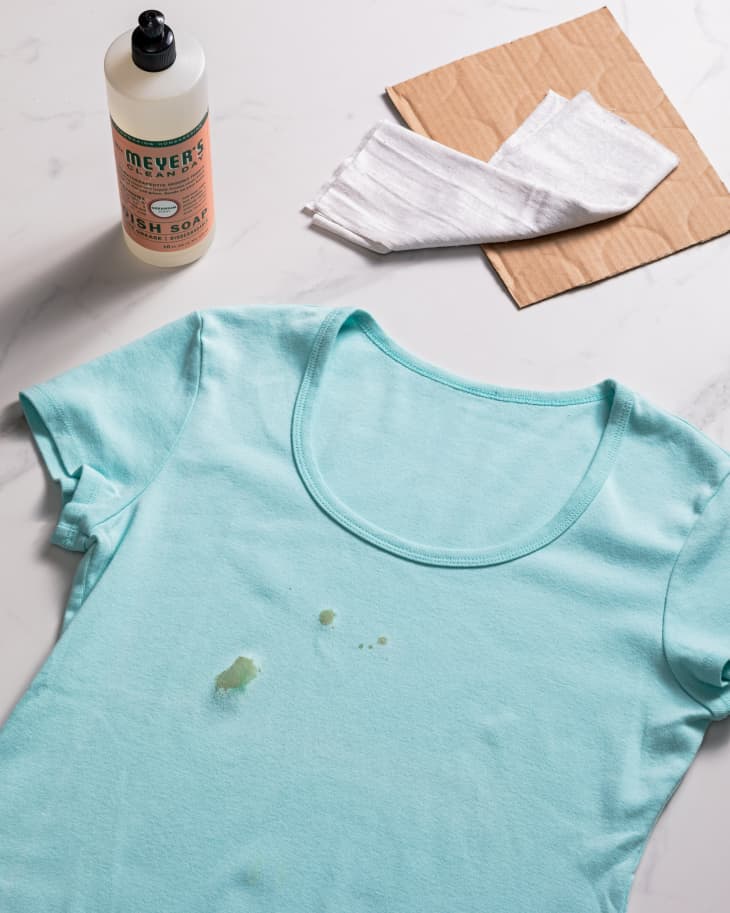
How to Remove Set-In Oil Stains, Step by Step
Set-in oil stains can be daunting, and they require a few maneuvers (as well as the right ingredients) to remove. If you can’t remove the oil or grease stain immediately after it happens, follow these steps:
1. Treat the Stain While the Fabric is Dry
Richardson points out that treating a stain on dry fabric is much easier than doing so on wet fabric because oil and water don’t mix.
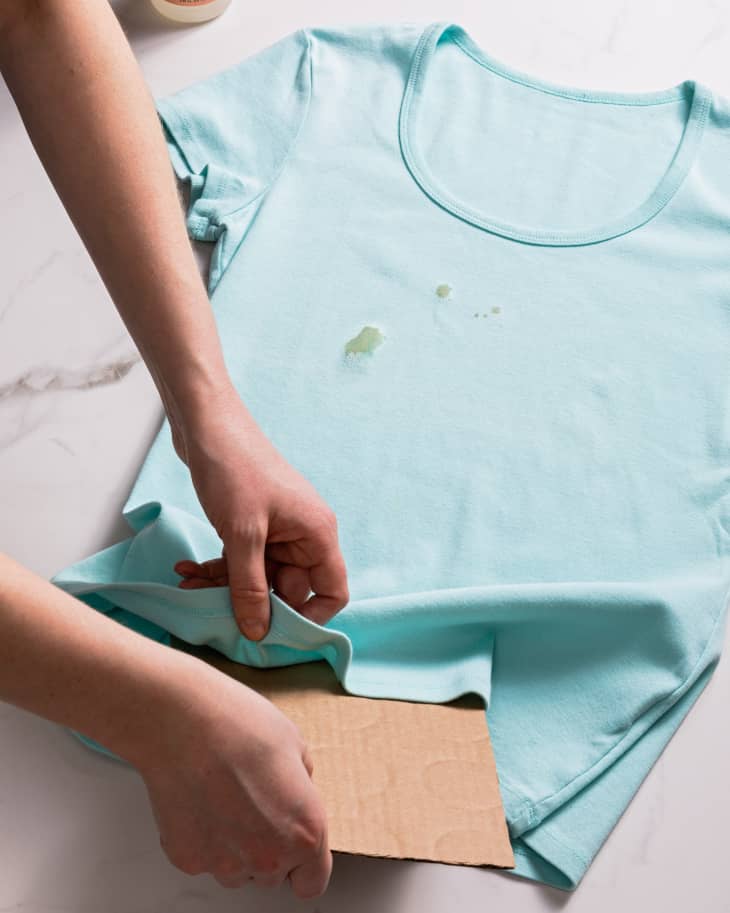
2. Place a Piece of Cardboard Behind the Stain
Placing a piece of cardboard between the layers of your clothing will help prevent the oil from spreading to other parts of the fabric.
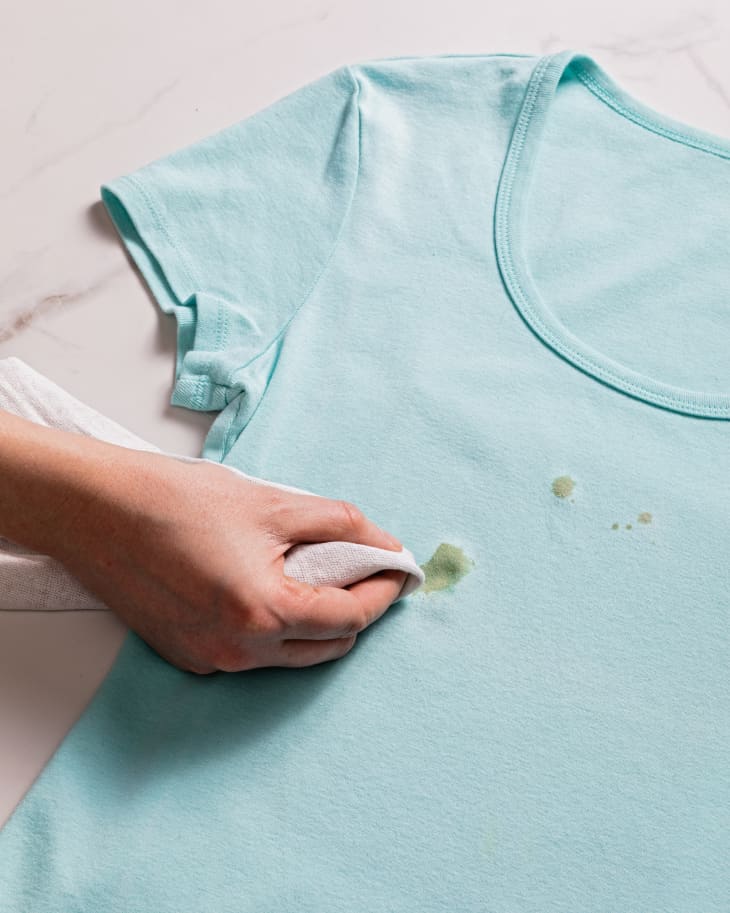
3. Blot the Stain with a Dry, Clean Cloth
You want to try to remove as much excess oil as possible. Blot carefully to avoid spreading the oil to unaffected areas of the fabric. If you don’t have a cloth, you can use paper towels instead.
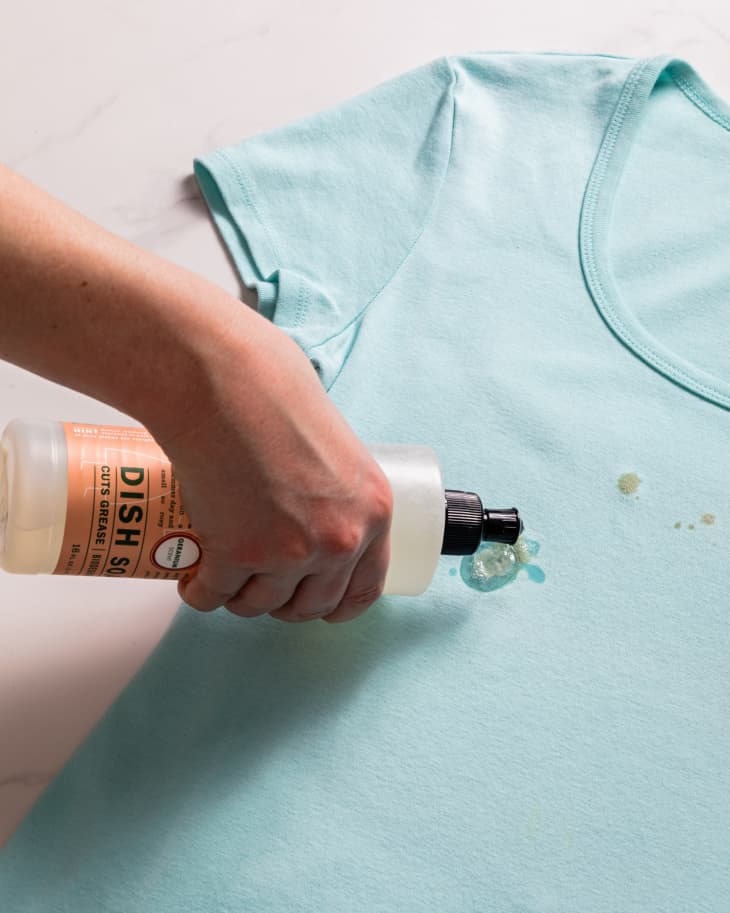
4. Apply Dish Soap to the Stain
Dish soap is effective in removing oil and grease stains from clothing, just as it is on your dishes.
Before treating the stain, apply a few drops of liquid dish soap to the affected area and let it soak in. Then, gently rub it with your fingers or a soft-bristled toothbrush, or a cloth, to help lift the stain.
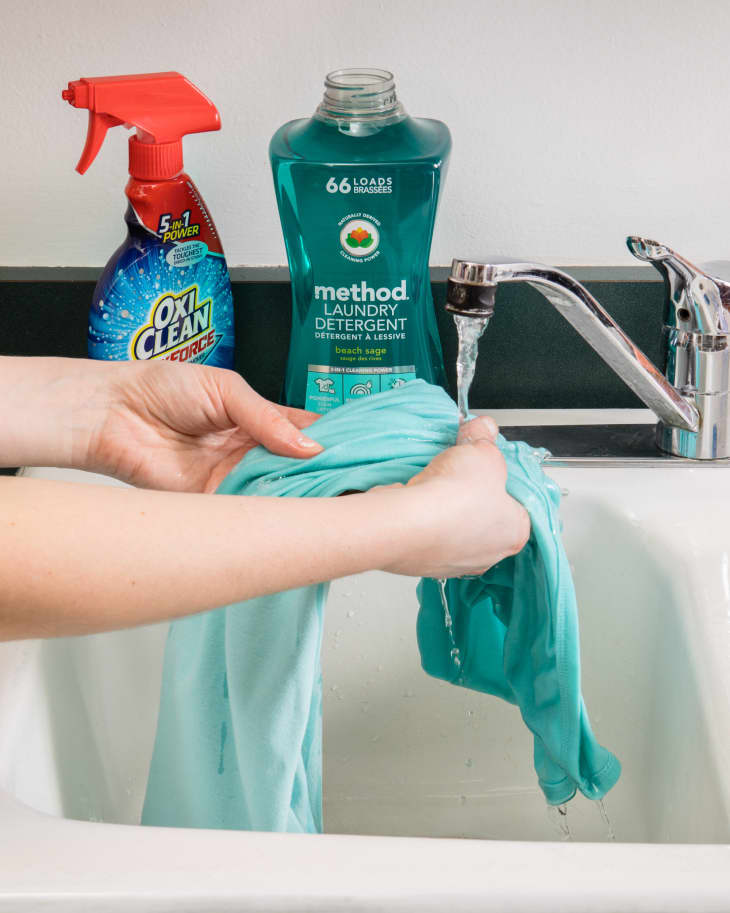
Soak the garment in soapy water for about 5 minutes.
5. Rinse with Warm Water and Then Wash as Usual
Wait for 5 minutes after applying the dish soap, and then proceed to wash the garment with warm water.
At this point, use your regular detergent along with bleach (for whites) or a color-safe brightener to ensure a thorough clean.
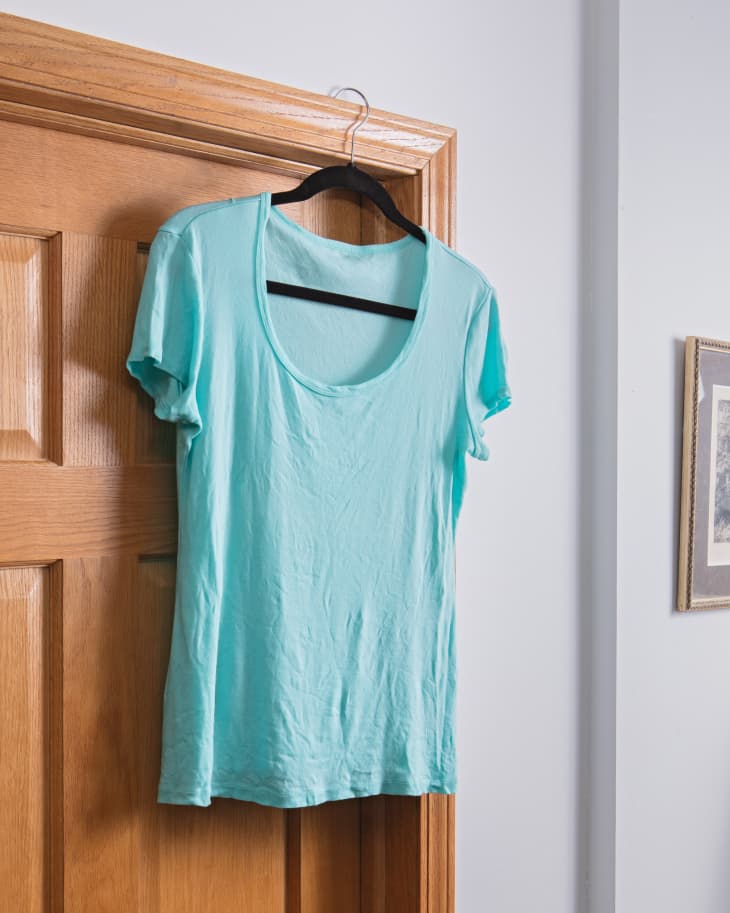
6. Air Dry
Because it’s difficult to spot oil stains on wet clothing, Goodman recommends waiting until the garment is dry to ensure that the stain has actually disappeared.
If the stain remains after air-drying, repeat the process of treating with dish soap and washing in hot water. Don’t machine-dry your garment, as the high temperature can set the stain, making it even harder to remove.
[Source: The Vietnamnet Bridge]





























